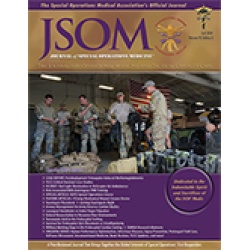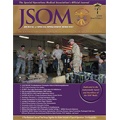Airway Management for Army Reserve Combat Medics: An Interdisciplinary Workshop
Miller BM, Kinder C, Smith-Steinert R 19(3). 64 - 70 (Journal Article)
Background: An Army Reserve Combat Medic's training is focused on knowledge attainment, skill development, and building experience and training to prepare them to perform in austere conditions with limited resources like on the battlefield. Unfortunately, the exposure to skills they may be responsible for performing is limited. Research shows that greater than 90% of battlefield deaths occur in the prehospital setting, 24% of which are potentially survivable. Literature demonstrates that 91% of these deaths are related to hemorrhage; the remaining are related to other causes, including airway compromise. The skill and decision-making of this population are prime targets to optimize outcomes in the battlefield setting. Methods: Army Reserve combat medics were selected to voluntarily participate in an educational intervention provided by anesthesia providers focusing on airway management. Participants completed a preintervention assessment to evaluate baseline knowledge levels as well as comfort with airway skills. Medics then participated in a simulated difficult airway scenario. Next, airway management was reviewed, and navigation of the difficult airway algorithm was discussed. The presentation was followed by simulations at four hands-on stations, which focused on fundamental airway concepts such as bag-mask ventilation and placement of oral airways, tracheal intubation, placement of supraglottic airways, and cricothyrotomy. Pre/post knowledge assessments and performance evaluation tools were used to measure the effectiveness of the intervention. Results: Statistically significant results were found in self-reported confidence levels with airway skills (z = -2.803, p = .005), algorithm progression (z = -2.807, p = .005), and predicting difficulty with airway interventions based on the patient's features (z = -2.809, p = .005). Establishment of ventilation was completed faster after the intervention. More coherent and effective airway management was noted, new knowledge was gained, and implications from psychological research applied. Conclusion: Supplementing the training of Army Reserve Combat Medics with the utilization of anesthesia providers is an effective platform. This exercise imparted confidence in this population of military providers. This is critical for decision-making capabilities, performance, and the prevention of potentially survivable mortality on the battlefield.


 Español
Español 




